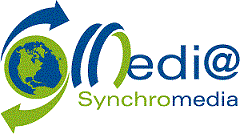Project Title: Global Currents: Cultures of Literary Networks, 1050-1900
Project Investigators: Andrew Piper, McGill University, Canada; Mohamed Cheriet, École de technologie supérieure, Canada; Elaine Treharne, Stanford University, United States; Lambert Schomaker, University of Groningen, The Netherlands
Partner: McGill University, École de technologie supérieure, Stanford University, University of Groningen
Project Funder: Insight (GRANTS) SSHRC Mcgill.

Description:
What problem are we solving?
In what ways have different cultures in different periods approached the page? Regardless of material, size, or the word used to designate it (page itself only comes into common usage in English in the sixteenth century), pages have been a core technology of reading across the globe since the invention and spread of the codex (TK). The bounded, flat rectangle accumulated in stacks is one of the more ubiquitous human tools in existence. And yet this standard of reading has enabled a vast array of different practices to flourish on its surface across time and space. The diversity of the visual presentation of information mirrors the diversity of human society.
This project offers a first attempt at accounting for these diverse cultures of the page, of what we might call the study of the “page view.” It does so not through the manual observation of pages – though this too remains important – but through the computational analysis of page images. There are by now millions of digitized pages in existence. Being able to account for this abundance requires new automated methods to assist us in studying the nature of these collections.
A range of new approaches have been developed to study large amounts of cultural records. Text mining has become a rich field of study today (TK). And yet it is precisely this emphasis on “text” that marks a major limitation of the field (Houston 2013). Not only has this focus on machine-readable text not been able to account for a wide range of documents, whether from distant historical periods (medieval manuscripts), non-western scriptural traditions (Chinese woodblocks), or even idiosyncratic printed traditions (German Fraktur). It also overlooks a core way that pages are meaningful as cultural objects. As much recent work in the history of the book has taught us, reading pages entails as much a visual practice as it does the literal one of decoding words (TK). Treating the page first and foremost as an image allows us to understand the navigational, decorative, and annotative relationship that readers have to bibliographic information. These aspects form for us three key dimensions in the ways pages frame the meaning of texts for readers. They mark out fundamental aspects of textuality that new data-driven approaches have so far not been able to account for.
Datasets
The methods that we present here are thus a first step in developing new tools to study the visual nature of pages across different world cultures. In addition to presenting our methods, we also offer brief case studies of the kinds of insights that these methods make possible. We range across the study of illuminated letters in a collection of 72,000 medieval Anglo-Saxon manuscript leaves, annotative practices in a collection of 31,280 Chinese woodblock prints from the Ming-Qing dynasty, to footnote practices among 600,000 pages of periodicals from the German Enlightenment. In what ways does accounting for the page view at broad scale and in a multi-cultural context change how we have thought about the history of reading? And are there ways that the computational process of detection itself can give us insights into the commonalities underlying these diverse practices? What does computation tell us beyond giving us access to a much broader array of documents than has been possible in the past?
